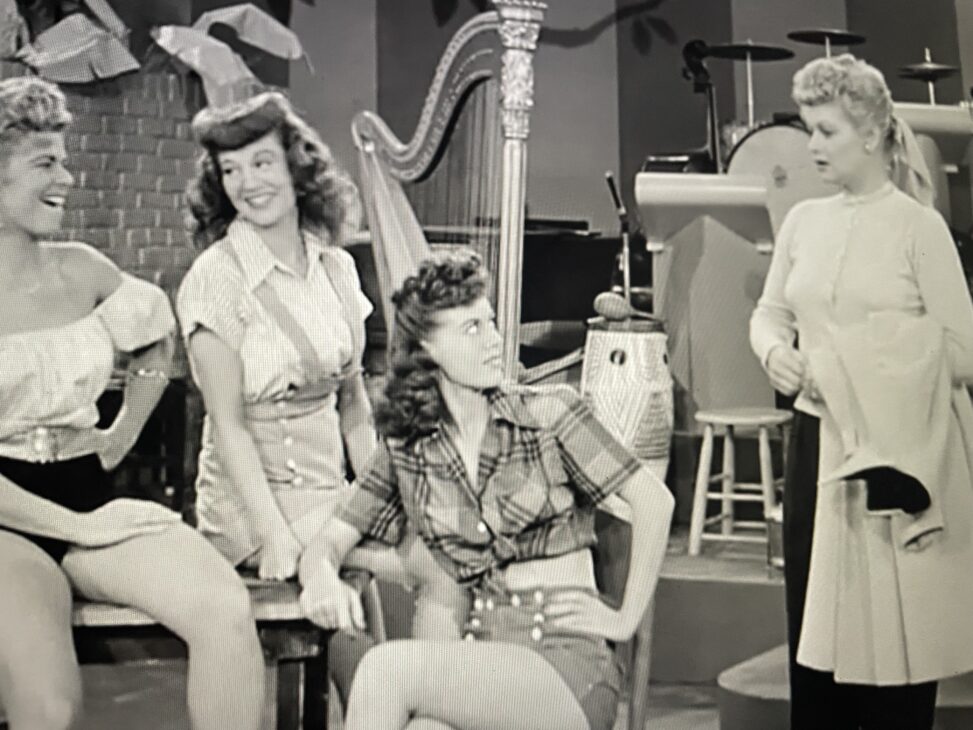The Girl at Lucy’s Audition makes a brief appearance in I Love Lucy, the 1951 New york-set sitcom television show that describes the shift from show business to the marriage of Lucy Ricardo. In this film, The Girl at Lucy’s Audition reflects what Serge Regourd identifies as an “ideal of democracy” (81) in Will Straw’s “Small Parts, Small Players” in a special issue of Screen. When Lucy goes to her husband’s audition call for dancers she finds herself in a room full of girls waiting to audition. Instantly the girl at Lucy’s audition begins making comments to Lucy about her appearance and clothing. It is these minor characters’ comments and body language that helps to bring a social narrative to the audition. The Girl at Lucy’s Audition highlights the context and societal norms into the scene bringing a sense of realism and reality. It is through the social stratification that the girl brings to the scene that we learn more about our main character Lucy and how the girl at the audition mirrors her younger self. This contrast between Lucy’s old self and her new self shows the end of an era and how she has outgrown her days as a performer showing her upward mobility. Serge Regourds’s ideas outline how films need to offer a sense of rich social types to fill social stratification. Straw discussing the work of Serge Regourds points out how Regourds considers “this sense of diverse and multilayered populations as the social texture through which narratives wind their way” (81). In the context of I Love Lucy, it is through the multilayered population that the young girl brings to the audition that helps form Lucy’s narrative. The Girl at Lucy’s Audition helps to outline the societal norms and reality Lucy is experiencing. Although the girl at the audition has few lines her body language helps to bring a sense of social stratification to the show creating what Straw discusses of Regourds idea as an “ideal of democracy” (81).
Works Cited
I Love Lucy (1951)
Straw, Will. “The Small Parts, Small Players Dossier Introduction.” SCREEN, vol. 52, no. 1, Mar. 2011, pp. 78–81.

Provide Feedback